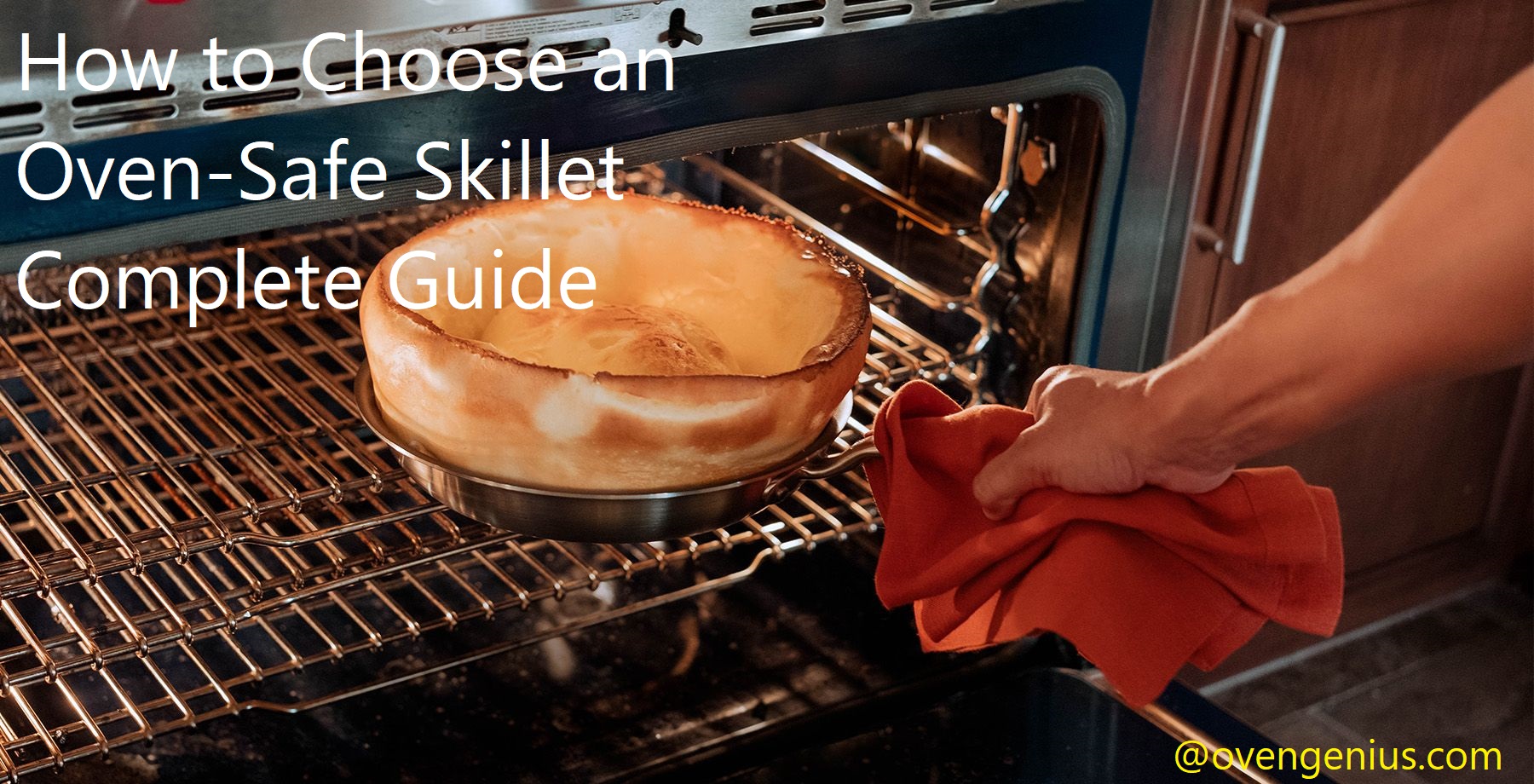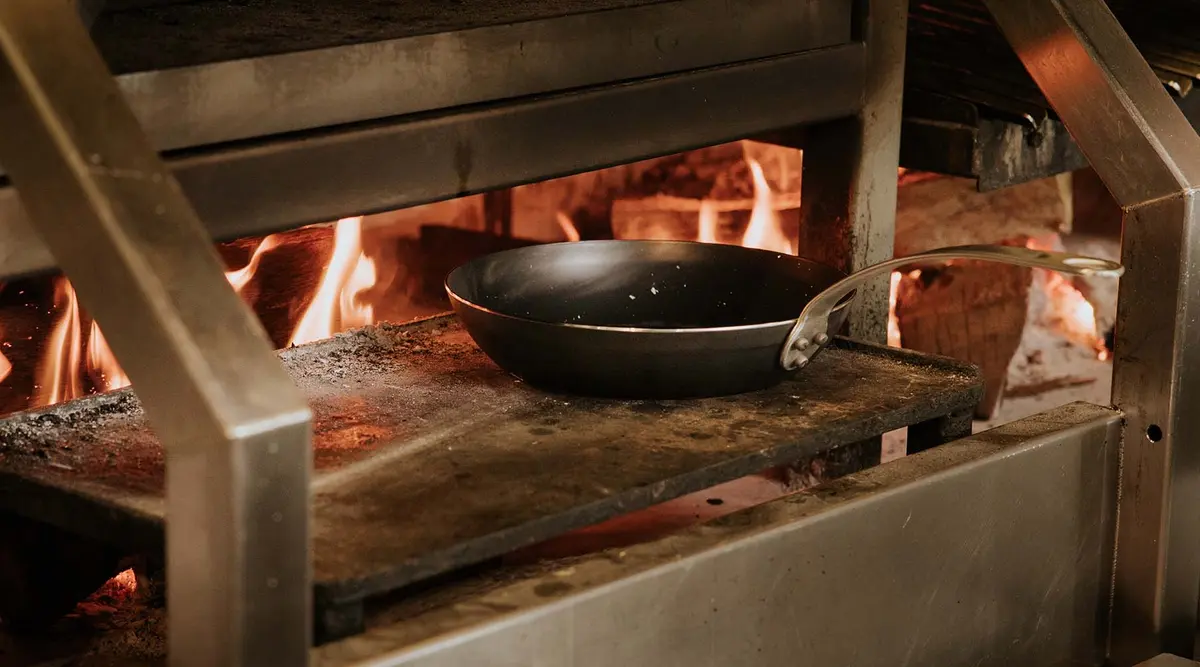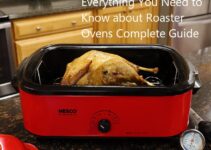If you’ve ever burned your dinner while cooking on a skillet, you know how important it is to invest in an oven-safe one. With this complete guide, you’ll discover the best material and size to choose so you can easily transfer dishes from stovetop to oven with ease.
When you are looking for new cookware for your kitchen, it is important to first consider the material used to make the skillet. An oven-safe skillet allows you to start in a pan on the stovetop, and then finish cooking in the oven without changing pans.
The two best materials for oven-safe skillets are stainless steel and cast iron. Both of these materials can safely withstand extreme temperatures. While both options have pros and cons, there is no single “best” material – it comes down to personal preference and what kind of cooking you plan to do.
In this guide, we will take a look at each option in more detail so that you can make an informed decision when searching for an oven-safe skillet. We’ll go over durability, handling, heat conduction, maintenance and overall cost so that you can choose the best possible option for your needs.
Explanation of the importance of choosing an oven-safe skillet
It is important to choose an oven-safe skillet when cooking, so that you can ensure that your food is cooked and safe. An oven-safe skillet allows you to cook food in the oven, as well as on the stovetop. It also creates a variety of cooking options, since you can move it from one surface to another without fear of damaging the pan or your food. Having an oven-safe pan also saves time and energy when preparing meals, as you can transfer it seamlessly from one surface to another with minimal effort and cleanup.
When selecting an oven-safe skillet, the two most important things to consider are the material and coating used in creating the pan. Cast iron should be at the top of your list if you’re looking for a heavy-duty skillet that will handle high temperatures, while stainless steel is better suited for lighter dishes. Nonstick skillets are great for low-fat cooking, as they require less oil or butter to prepare foods. Whichever type of skillet you choose, make sure that it is rated at least 450°F (232°C) before placing it in a hot oven—anything lower than this may cause warping or burning of your food or damage to your cookware. Additionally, always check with your manufacturer’s instructions before heating any nonstick cookware in your oven or over high heat on your stovetop.

Understanding Oven-Safe Skillets
When shopping for an oven-safe skillet, there are a few things that you should look for to ensure that it is of the best quality and can withstand high temperatures. The most important feature to consider is the material the skillet is made of. Different materials offer different levels of heat insulation and can affect how evenly your food cooks, so it’s important to understand the differences between them before making a purchase.
Aluminum: Aluminum is one of the most popular materials when it comes to manufacturing skillets because it offers even heat distribution. It also tends to be fairly light in comparison to other metals, making it easier to handle and transport. However, aluminum tends not to be as durable as some other metals and can be prone to warping if not properly cared for. Aluminum skillets are typically safe up until around 400°F (204°C).
Cast Iron: Cast iron has become a popular option in recent years due mainly because of its durability and ability to retain heat. This makes cast iron ideal for longer cooking times since your food won’t cool down as quickly. However, cast iron does require more upkeep than aluminum skillets in order for it maintain its non-stick properties over time – this includes proper seasoning and cleaning processes which may be too intensive for some people’s tastes. Cast iron skillets are typically safe up until around 500°F (260°C).
Stainless Steel: Stainless steel is an excellent choice if you want your skillet to last a long time without much upkeep or worry about rusting or warping. It offers great heat control along with being incredibly durable – though stainless steel isn’t capable of reaching quite as high temperatures as some other metals due to its thicker density. Stainless steel skillets are typically considered oven-safe over 500°F (260°C) however they can sometimes go upwards of 600°F (316°C).
Definition of an oven-safe skillet
An oven-safe skillet is generally a metal skillet that is designed to be used in a hot oven. This type of skillet is usually made of aluminum or cast iron, although some stainless steel pans may also be able to withstand high temperatures.
It is important to read the manufacturer’s guidelines before using an oven-safe skillet, as different manufacturers may have varying recommendations for how their pieces should be used. For example, some products may only be oven safe up to a certain temperature or specifiable time limit. Additionally, handle materials and finishes ought to match the manufacturer’s warnings before being put into the oven, as some handles will become brittle and delicate after long exposure to heat.
Different types of oven-safe skillets
When cooking with an oven-safe skillet, you must take into account the material that the pan is made of in order to properly determine its temperature resistance. Generally, anything made of metal can be safely used in the oven. Cast iron and aluminum skillets are both popular choices for home cooks and offer excellent heat distribution, as well as the ability to handle high temperatures. Though beautiful, copper and stainless steel can not always handle high heat without some sort of a special treatment.
When buying an oven-safe skillet, always check for a manufacturer’s label stating that it is dishwasher safe and/or oven safe. Some skillets come with enameled coating which also helps them resist higher temperatures better compared to untreated metals.
Non-stick pans are great for everyday stovetop use but they should rarely be put in an oven because they can’t handle extreme temperatures very well and their non-stick coatings may break down. The most versatile skillets are those that have been treated with PFOA-free nonstick coatings on the inside and hardy metal coating on the outside which provide both even heating combined with easy cleanup capabilities).
You should also consider size when purchasing an oven-safe skillet: if it’s too large, it will be difficult to maneuver or transfer from stovetop to oven; if it’s too small, you may end up having leftovers or burning food without depending on guests’ preferences or cooking for yourself in chunks instead of all together.
If you’re looking for something lightweight without sacrificing quality and performance opt for aluminum skillets – they offer excellent heat transfer properties combined with easy cleanup skills once coated some good quality non stick material which makes them perfect even for beginner cooks who need something easy to work with yet reliable . If you’re looking something solid and sturdy cast iron pots are always your best bet being naturally rust proof offering amazing coverage all over your cooking area so no food gets lost along its sides while making stir fries grilling steaks or sautéing vegetables.
Factors to Consider When Choosing an Oven-Safe Skillet
When considering the various factors to think about when choosing an oven-safe skillet, it is important to consider the material it is made of, how easy to use and clean it is, and its capacity.
Material: Oven-safe skillets are typically made of aluminum or stainless steel, with either a non-stick coating or enamel finish. Some skillets may combine several materials in order to achieve a greater level of convenience.
Ease of Use and Cleaning: The ease with which the skillet can be used and cleaned should be taken into consideration when choosing one. This includes the ability to easily maneuver it from stove to oven, as well as its ability to resist damage from use. Additionally, it should be checked for non-stick performance in order to ensure that food does not stick excessively when cooking. Its cleaning characteristics should also be assessed – an oven-safe skillet should also be dishwasher safe for quick and easy cleaning.
Capacity: It is very important for an oven-safe skillet have a large enough capacity for your cooking needs – this can vary depending on what you are cooking and the size of your family or group you are serving. A larger size eliminates overcrowding on the stovetop while still allowing enough space for even cooking in the oven.

Material of the skillet
When it comes to oven-safe skillets, the material of the skillet is extremely important. Stainless steel skillets are an excellent choice because they are non-reactive with foods, durable, and able to withstand temperatures up to 500°F.
Aluminum skillets are also a good choice because they can also withstand high temperatures and because aluminum is lighter weight than stainless steel, it can be easier to maneuver in the kitchen.
Cast iron skillets are great for retaining heat while cooking and they are suitable for both stovetop and oven cooking. However, you have to be mindful that cast iron is reactive with certain foods and needs seasoning with oil on a regular basis.
Non-stick skillets may or may not be suitable depending on their construction; always check the manufacturer’s instructions before using them in an oven.
Type of handle
When looking for an oven-safe skillet, the type of handle is a critical factor to consider. The handle must be able to withstand high temperatures, so steel or reinforced plastic is recommended over wood or rubber handles, which are prone to melting under extreme heat.
It’s also important that the handle is securely attached and stays cool despite extended contact with hot surfaces. A good way to ensure that the material and attachment of an oven-safe skillet’s handle can withstand heat is by examining the manufacturer’s instructions – they should provide detailed information on the maximum temperature that should be used when cooking in their products.
Beyond its ability to withstand heat, having a comfortable grip is also important when selecting an oven-safe skillet; make sure you select handles that fit your hand size and shape for easier handling.
Size of the skillet
When choosing an oven-safe skillet, it is important to consider the size of your cooking area and the type of meals that you plan on preparing regularly. Skillets typically range in size from 8 inches to 12 inches in diameter, but there are larger models available. The most common size used in home kitchens is 10” diameter; this will suit most cooking needs, allowing you to prepare multiple servings quickly and easily. If you have a larger family or if you entertain frequently, it may be beneficial to select a 12” skillet. If space and budget allow, having more than one oven-safe skillet available can provide even greater versatility when cooking.
When selecting an oven-safe skillet that is appropriate for your needs, keep in mind the following factors:
:strip_icc()/removing-skillet-from-oven-5db366184f2940eb9891ad355e7e9cc8.jpg)
Conclusion
Choosing the right oven-safe skillet can be tricky as there are many different types and styles available. Each type has its own advantages, so it’s important to consider the size, material and construction of the skillet to ensure it meets your culinary needs. Stainless steel, anodized aluminum and cast-iron skillets are all great options for those looking for an oven-safe skillet.
In addition to choosing a style of oven-safe skillet, you should also pay attention to how the skillet is made. Look for features such as handles with silicone grips for easy handling and lids that fit securely over the lip of the pan for steam control. Taking these steps will help you select a well made oven-safe skillet that can handle high temperatures without any issues or warping.
FAQ’S
What kind of skillets are oven safe?
Skillets that are oven safe are typically made of materials such as cast iron, stainless steel, or ceramic. However, it’s always important to check the manufacturer’s instructions to ensure that the skillet is safe for oven use.
What is the best skillet to put in the oven?
The best skillet to put in the oven depends on your cooking needs and preferences. Cast iron and stainless steel skillets are popular choices for oven use due to their durability and heat retention capabilities.
What is the safest cookware for oven?
Ceramic and glass cookware are generally considered the safest options for oven use as they do not release any harmful chemicals or toxins when exposed to high temperatures.
How do you make a skillet oven safe?
To make a skillet oven safe, ensure that it is made of materials that are safe for oven use, such as cast iron or stainless steel. Additionally, check that the skillet’s handle is made of a material that can withstand high temperatures.
Is it OK to put cast iron skillet in oven?
Yes, it is generally safe to put a cast iron skillet in the oven as it can withstand high temperatures and retain heat well.
How do I choose a good skillet?
When choosing a skillet, consider factors such as the material, size, and weight of the skillet. Look for a skillet that is made of a durable material, has a comfortable handle, and is the appropriate size for your cooking needs.
How do I know if my skillet is ovenproof?
You can check if your skillet is ovenproof by checking the manufacturer’s instructions or looking for a symbol on the bottom of the skillet that indicates that it is safe for oven use.
How do I know if I have an oven proof skillet?
You can determine if your skillet is ovenproof by checking for a symbol on the bottom of the skillet that indicates that it is safe for oven use. Alternatively, check the manufacturer’s instructions for guidance.
Are all stainless steel skillets oven safe?
Not all stainless steel skillets are oven safe. It’s important to check the manufacturer’s instructions to ensure that the skillet is safe for oven use.
What skillets do chefs use?
Chefs often use skillets that are made of durable materials such as cast iron or stainless steel, as these materials can withstand high heat and retain heat well. However, the specific skillet that a chef uses depends on their individual preferences and cooking needs.
See Also:
- Best convection oven for sublimation
- Best countertop pizza oven
- Best double wall oven
- Best dutch oven for bread
- Best electric pizza oven


